#hadoop data lake implementation
Explore tagged Tumblr posts
Text
https://www.atgeirsolutions.com/data-lake-implementations/
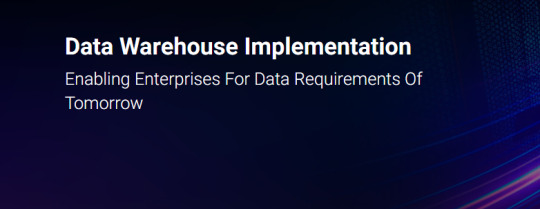
To know more visit: https://www.atgeirsolutions.com/datawarehouse-implementations/
#data lake implementation#hadoop data lake implementation#design and build a data warehouse for business intelligence implementation
0 notes
Text
Implementing AI: Step-by-step integration guide for hospitals: Specifications Breakdown, FAQs, and More
Implementing AI: Step-by-step integration guide for hospitals: Specifications Breakdown, FAQs, and More

The healthcare industry is experiencing a transformative shift as artificial intelligence (AI) technologies become increasingly sophisticated and accessible. For hospitals looking to modernize their operations and improve patient outcomes, implementing AI systems represents both an unprecedented opportunity and a complex challenge that requires careful planning and execution.
This comprehensive guide provides healthcare administrators, IT directors, and medical professionals with the essential knowledge needed to successfully integrate AI technologies into hospital environments. From understanding technical specifications to navigating regulatory requirements, we’ll explore every aspect of AI implementation in healthcare settings.
Understanding AI in Healthcare: Core Applications and Benefits
Artificial intelligence in healthcare encompasses a broad range of technologies designed to augment human capabilities, streamline operations, and enhance patient care. Modern AI systems can analyze medical imaging with remarkable precision, predict patient deterioration before clinical symptoms appear, optimize staffing schedules, and automate routine administrative tasks that traditionally consume valuable staff time.
The most impactful AI applications in hospital settings include diagnostic imaging analysis, where machine learning algorithms can detect abnormalities in X-rays, CT scans, and MRIs with accuracy rates that often exceed human radiologists. Predictive analytics systems monitor patient vital signs and electronic health records to identify early warning signs of sepsis, cardiac events, or other critical conditions. Natural language processing tools extract meaningful insights from unstructured clinical notes, while robotic process automation handles insurance verification, appointment scheduling, and billing processes.
Discover the exclusive online health & beauty, designed for people who want to stay healthy and look young.
Technical Specifications for Hospital AI Implementation
Infrastructure Requirements
Successful AI implementation demands robust technological infrastructure capable of handling intensive computational workloads. Hospital networks must support high-bandwidth data transfer, with minimum speeds of 1 Gbps for imaging applications and 100 Mbps for general clinical AI tools. Storage systems require scalable architecture with at least 50 TB initial capacity for medical imaging AI, expandable to petabyte-scale as usage grows.
Server specifications vary by application type, but most AI systems require dedicated GPU resources for machine learning processing. NVIDIA Tesla V100 or A100 cards provide optimal performance for medical imaging analysis, while CPU-intensive applications benefit from Intel Xeon or AMD EPYC processors with minimum 32 cores and 128 GB RAM per server node.
Data Integration and Interoperability
AI systems must seamlessly integrate with existing Electronic Health Record (EHR) platforms, Picture Archiving and Communication Systems (PACS), and Laboratory Information Systems (LIS). HL7 FHIR (Fast Healthcare Interoperability Resources) compliance ensures standardized data exchange between systems, while DICOM (Digital Imaging and Communications in Medicine) standards govern medical imaging data handling.
Database requirements include support for both structured and unstructured data formats, with MongoDB or PostgreSQL recommended for clinical data storage and Apache Kafka for real-time data streaming. Data lakes built on Hadoop or Apache Spark frameworks provide the flexibility needed for advanced analytics and machine learning model training.
Security and Compliance Specifications
Healthcare AI implementations must meet stringent security requirements including HIPAA compliance, SOC 2 Type II certification, and FDA approval where applicable. Encryption standards require AES-256 for data at rest and TLS 1.3 for data in transit. Multi-factor authentication, role-based access controls, and comprehensive audit logging are mandatory components.
Network segmentation isolates AI systems from general hospital networks, with dedicated VLANs and firewall configurations. Regular penetration testing and vulnerability assessments ensure ongoing security posture, while backup and disaster recovery systems maintain 99.99% uptime requirements.
Step-by-Step Implementation Framework
Phase 1: Assessment and Planning (Months 1–3)
The implementation journey begins with comprehensive assessment of current hospital infrastructure, workflow analysis, and stakeholder alignment. Form a cross-functional implementation team including IT leadership, clinical champions, department heads, and external AI consultants. Conduct thorough evaluation of existing systems, identifying integration points and potential bottlenecks.
Develop detailed project timelines, budget allocations, and success metrics. Establish clear governance structures with defined roles and responsibilities for each team member. Create communication plans to keep all stakeholders informed throughout the implementation process.
Phase 2: Infrastructure Preparation (Months 2–4)
Upgrade network infrastructure to support AI workloads, including bandwidth expansion and latency optimization. Install required server hardware and configure GPU clusters for machine learning processing. Implement security measures including network segmentation, access controls, and monitoring systems.
Establish data integration pipelines connecting AI systems with existing EHR, PACS, and laboratory systems. Configure backup and disaster recovery solutions ensuring minimal downtime during transition periods. Test all infrastructure components thoroughly before proceeding to software deployment.
Phase 3: Software Deployment and Configuration (Months 4–6)
Deploy AI software platforms in staged environments, beginning with development and testing systems before production rollout. Configure algorithms and machine learning models for specific hospital use cases and patient populations. Integrate AI tools with clinical workflows, ensuring seamless user experiences for medical staff.
Conduct extensive testing including functionality verification, performance benchmarking, and security validation. Train IT support staff on system administration, troubleshooting procedures, and ongoing maintenance requirements. Establish monitoring and alerting systems to track system performance and identify potential issues.
Phase 4: Clinical Integration and Training (Months 5–7)
Develop comprehensive training programs for clinical staff, tailored to specific roles and responsibilities. Create user documentation, quick reference guides, and video tutorials covering common use cases and troubleshooting procedures. Implement change management strategies to encourage adoption and address resistance to new technologies.
Begin pilot programs with select departments or use cases, gradually expanding scope as confidence and competency grow. Establish feedback mechanisms allowing clinical staff to report issues, suggest improvements, and share success stories. Monitor usage patterns and user satisfaction metrics to guide optimization efforts.
Phase 5: Optimization and Scaling (Months 6–12)
Analyze performance data and user feedback to identify optimization opportunities. Fine-tune algorithms and workflows based on real-world usage patterns and clinical outcomes. Expand AI implementation to additional departments and use cases following proven success patterns.
Develop long-term maintenance and upgrade strategies ensuring continued system effectiveness. Establish partnerships with AI vendors for ongoing support, feature updates, and technology evolution. Create internal capabilities for algorithm customization and performance monitoring.
Regulatory Compliance and Quality Assurance
Healthcare AI implementations must navigate complex regulatory landscapes including FDA approval processes for diagnostic AI tools, HIPAA compliance for patient data protection, and Joint Commission standards for patient safety. Establish quality management systems documenting all validation procedures, performance metrics, and clinical outcomes.
Implement robust testing protocols including algorithm validation on diverse patient populations, bias detection and mitigation strategies, and ongoing performance monitoring. Create audit trails documenting all AI decisions and recommendations for regulatory review and clinical accountability.
Cost Analysis and Return on Investment
AI implementation costs vary significantly based on scope and complexity, with typical hospital projects ranging from $500,000 to $5 million for comprehensive deployments. Infrastructure costs including servers, storage, and networking typically represent 30–40% of total project budgets, while software licensing and professional services account for the remainder.
Expected returns include reduced diagnostic errors, improved operational efficiency, decreased length of stay, and enhanced staff productivity. Quantifiable benefits often justify implementation costs within 18–24 months, with long-term savings continuing to accumulate as AI capabilities expand and mature.
Discover the exclusive online health & beauty, designed for people who want to stay healthy and look young.
Frequently Asked Questions (FAQs)
1. How long does it typically take to implement AI systems in a hospital setting?
Complete AI implementation usually takes 12–18 months from initial planning to full deployment. This timeline includes infrastructure preparation, software configuration, staff training, and gradual rollout across departments. Smaller implementations focusing on specific use cases may complete in 6–9 months, while comprehensive enterprise-wide deployments can extend to 24 months or longer.
2. What are the minimum technical requirements for AI implementation in healthcare?
Minimum requirements include high-speed network connectivity (1 Gbps for imaging applications), dedicated server infrastructure with GPU support, secure data storage systems with 99.99% uptime, and integration capabilities with existing EHR and PACS systems. Most implementations require initial storage capacity of 10–50 TB and processing power equivalent to modern server-grade hardware with minimum 64 GB RAM per application.
3. How do hospitals ensure AI systems comply with HIPAA and other healthcare regulations?
Compliance requires comprehensive security measures including end-to-end encryption, access controls, audit logging, and regular security assessments. AI vendors must provide HIPAA-compliant hosting environments with signed Business Associate Agreements. Hospitals must implement data governance policies, staff training programs, and incident response procedures specifically addressing AI system risks and regulatory requirements.
4. What types of clinical staff training are necessary for AI implementation?
Training programs must address both technical system usage and clinical decision-making with AI assistance. Physicians require education on interpreting AI recommendations, understanding algorithm limitations, and maintaining clinical judgment. Nurses need training on workflow integration and alert management. IT staff require technical training on system administration, troubleshooting, and performance monitoring. Training typically requires 20–40 hours per staff member depending on their role and AI application complexity.
5. How accurate are AI diagnostic tools compared to human physicians?
AI diagnostic accuracy varies by application and clinical context. In medical imaging, AI systems often achieve accuracy rates of 85–95%, sometimes exceeding human radiologist performance for specific conditions like diabetic retinopathy or skin cancer detection. However, AI tools are designed to augment rather than replace clinical judgment, providing additional insights that physicians can incorporate into their diagnostic decision-making process.
6. What ongoing maintenance and support do AI systems require?
AI systems require continuous monitoring of performance metrics, regular algorithm updates, periodic retraining with new data, and ongoing technical support. Hospitals typically allocate 15–25% of initial implementation costs annually for maintenance, including software updates, hardware refresh cycles, staff training, and vendor support services. Internal IT teams need specialized training to manage AI infrastructure and troubleshoot common issues.
7. How do AI systems integrate with existing hospital IT infrastructure?
Modern AI platforms use standard healthcare interoperability protocols including HL7 FHIR and DICOM to integrate with EHR systems, PACS, and laboratory information systems. Integration typically requires API development, data mapping, and workflow configuration to ensure seamless information exchange. Most implementations use middleware solutions to manage data flow between AI systems and existing hospital applications.
8. What are the potential risks and how can hospitals mitigate them?
Primary risks include algorithm bias, system failures, data security breaches, and over-reliance on AI recommendations. Mitigation strategies include diverse training data sets, robust testing procedures, comprehensive backup systems, cybersecurity measures, and continuous staff education on AI limitations. Hospitals should maintain clinical oversight protocols ensuring human physicians retain ultimate decision-making authority.
9. How do hospitals measure ROI and success of AI implementations?
Success metrics include clinical outcomes (reduced diagnostic errors, improved patient safety), operational efficiency (decreased processing time, staff productivity gains), and financial impact (cost savings, revenue enhancement). Hospitals typically track key performance indicators including diagnostic accuracy rates, workflow efficiency improvements, patient satisfaction scores, and quantifiable cost reductions. ROI calculations should include both direct cost savings and indirect benefits like improved staff satisfaction and reduced liability risks.
10. Can smaller hospitals implement AI, or is it only feasible for large health systems?
AI implementation is increasingly accessible to hospitals of all sizes through cloud-based solutions, software-as-a-service models, and vendor partnerships. Smaller hospitals can focus on specific high-impact applications like radiology AI or clinical decision support rather than comprehensive enterprise deployments. Cloud platforms reduce infrastructure requirements and upfront costs, making AI adoption feasible for hospitals with 100–300 beds. Many vendors offer scaled pricing models and implementation support specifically designed for smaller healthcare organizations.
Discover the exclusive online health & beauty, designed for people who want to stay healthy and look young.
Conclusion: Preparing for the Future of Healthcare
AI implementation in hospitals represents a strategic investment in improved patient care, operational efficiency, and competitive positioning. Success requires careful planning, adequate resources, and sustained commitment from leadership and clinical staff. Hospitals that approach AI implementation systematically, with proper attention to technical requirements, regulatory compliance, and change management, will realize significant benefits in patient outcomes and organizational performance.
The healthcare industry’s AI adoption will continue accelerating, making early implementation a competitive advantage. Hospitals beginning their AI journey today position themselves to leverage increasingly sophisticated technologies as they become available, building internal capabilities and organizational readiness for the future of healthcare delivery.
As AI technologies mature and regulatory frameworks evolve, hospitals with established AI programs will be better positioned to adapt and innovate. The investment in AI implementation today creates a foundation for continuous improvement and technological advancement that will benefit patients, staff, and healthcare organizations for years to come.
0 notes
Text
Top 5 Benefits of Implementing a Data Lake Solution
Implementing a data lake solution offers numerous strategic advantages for organizations aiming to harness the full potential of their data assets.Flycatch the data lake solutions company in Saudi Arabia experience a seamless stream of insights driving superior business decisions.
1. Enhanced Data Agility and Flexibility
Data lakes allow organizations to store data in its raw form, accommodating structured, semi-structured, and unstructured data. This flexibility enables:
Rapid ingestion of diverse data types without the need for upfront schema definitions.
Adaptability to evolving data requirements and analytical needs.
This agility supports faster decision-making and innovation by providing immediate access to a wide array of data sources. Built on scalable architectures like Hadoop or cloud-based object storage, data lakes can handle vast amounts of data efficiently. Benefits include:
Horizontal scaling to accommodate growing data volumes.
Cost savings through the use of low-cost storage solutions and pay-as-you-go models.
This scalability ensures that organizations can manage increasing data loads without significant infrastructure investments.
3. Advanced Analytics and Machine Learning Capabilities
Data lakes serve as a foundation for advanced analytics by:
Providing a centralized repository for diverse data types, facilitating comprehensive analysis.
Supporting machine learning and AI applications through access to large, varied datasets.
This capability enables organizations to uncover insights, predict trends, and make data-driven decisions.
4. Data Democratization and Collaboration
By centralizing data storage, data lakes promote:
Self-service access to data for various stakeholders, reducing dependency on IT teams.
Collaboration across departments by breaking down data silos.
This democratization fosters a data-driven culture and enhances organizational efficiency.
5. Consolidation of Data Silos
Data lake solution integrate data from multiple sources into a single repository, leading to:
A unified view of organizational data, improving consistency and accuracy.
Simplified data management and governance.
This consolidation supports comprehensive analytics and streamlined operations.
0 notes
Text
Your Data Science Career Roadmap: Navigating the Jobs and Levels

The field of data science is booming, offering a myriad of exciting career opportunities. However, for many, the landscape of job titles and progression paths can seem like a dense forest. Are you a Data Analyst, a Data Scientist, or an ML Engineer? What's the difference, and how do you climb the ladder?
Fear not! This guide will provide a clear roadmap of common data science jobs and their typical progression levels, helping you chart your course in this dynamic domain.
The Core Pillars of a Data Science Career
Before diving into specific roles, it's helpful to understand the three main pillars that define much of the data science ecosystem:
Analytics: Focusing on understanding past and present data to extract insights and inform business decisions.
Science: Focusing on building predictive models, often using machine learning, to forecast future outcomes or automate decisions.
Engineering: Focusing on building and maintaining the infrastructure and pipelines that enable data collection, storage, and processing for analytics and science.
While there's often overlap, many roles lean heavily into one of these areas.
Common Data Science Job Roles and Their Progression
Let's explore the typical roles and their advancement levels:
I. Data Analyst
What they do: The entry point for many into the data world. Data Analysts collect, clean, analyze, and visualize data to answer specific business questions. They often create dashboards and reports to present insights to stakeholders.
Key Skills: SQL, Excel, data visualization tools (Tableau, Power BI), basic statistics, Python/R for data manipulation (Pandas, dplyr).
Levels:
Junior Data Analyst: Focus on data cleaning, basic reporting, and assisting senior analysts.
Data Analyst: Independent analysis, creating comprehensive reports and dashboards, communicating findings.
Senior Data Analyst: Leading analytical projects, mentoring junior analysts, working on more complex business problems.
Progression: Can move into Data Scientist roles (by gaining more ML/statistical modeling skills), Business Intelligence Developer, or Analytics Manager.
II. Data Engineer
What they do: The architects and builders of the data infrastructure. Data Engineers design, construct, and maintain scalable data pipelines, data warehouses, and data lakes. They ensure data is accessible, reliable, and efficient for analysts and scientists.
Key Skills: Strong programming (Python, Java, Scala), SQL, NoSQL databases, ETL tools, cloud platforms (AWS, Azure, GCP), big data technologies (Hadoop, Spark, Kafka).
Levels:
Junior Data Engineer: Assisting in pipeline development, debugging, data ingestion tasks.
Data Engineer: Designing and implementing data pipelines, optimizing data flows, managing data warehousing.
Senior Data Engineer: Leading complex data infrastructure projects, setting best practices, mentoring, architectural design.
Principal Data Engineer / Data Architect: High-level strategic design of data systems, ensuring scalability, security, and performance across the organization.
Progression: Can specialize in Big Data Engineering, Cloud Data Engineering, or move into Data Architect roles.
III. Data Scientist
What they do: The problem-solvers who use advanced statistical methods, machine learning, and programming to build predictive models and derive actionable insights from complex, often unstructured data. They design experiments, evaluate models, and communicate technical findings to non-technical audiences.
Key Skills: Python/R (with advanced libraries like Scikit-learn, TensorFlow, PyTorch), advanced statistics, machine learning algorithms, deep learning (for specialized roles), A/B testing, data modeling, strong communication.
Levels:
Junior Data Scientist: Works on specific model components, assists with data preparation, learns from senior scientists.
Data Scientist: Owns end-to-end model development for defined problems, performs complex analysis, interprets results.
Senior Data Scientist: Leads significant data science initiatives, mentors juniors, contributes to strategic direction, handles ambiguous problems.
Principal Data Scientist / Lead Data Scientist: Drives innovation, sets technical standards, leads cross-functional projects, influences product/business strategy with data insights.
Progression: Can move into Machine Learning Engineer, Research Scientist, Data Science Manager, or even Product Manager (for data products).
IV. Machine Learning Engineer (MLE)
What they do: Bridge the gap between data science models and production systems. MLEs focus on deploying, optimizing, and maintaining machine learning models in real-world applications. They ensure models are scalable, reliable, and perform efficiently in production environments (MLOps).
Key Skills: Strong software engineering principles, MLOps tools (Kubeflow, MLflow), cloud computing, deployment frameworks, understanding of ML algorithms, continuous integration/delivery (CI/CD).
Levels:
Junior ML Engineer: Assists in model deployment, monitoring, and basic optimization.
ML Engineer: Responsible for deploying and maintaining ML models, building robust ML pipelines.
Senior ML Engineer: Leads the productionization of complex ML systems, optimizes for performance and scalability, designs ML infrastructure.
Principal ML Engineer / ML Architect: Defines the ML architecture across the organization, researches cutting-edge deployment strategies, sets MLOps best practices.
Progression: Can specialize in areas like Deep Learning Engineering, NLP Engineering, or move into AI/ML leadership roles.
V. Other Specialized & Leadership Roles
As you gain experience and specialize, other roles emerge:
Research Scientist (AI/ML): Often found in R&D departments or academia, these roles focus on developing novel algorithms and pushing the boundaries of AI/ML. Requires strong theoretical understanding and research skills.
Business Intelligence Developer/Analyst: More focused on reporting, dashboards, and operational insights, often using specific BI tools.
Quantitative Analyst (Quant): Primarily in finance, applying complex mathematical and statistical models for trading, risk management, and financial forecasting.
Data Product Manager: Defines, develops, and launches data-driven products, working at the intersection of business, technology, and data science.
Data Science Manager / Director / VP of Data Science / Chief Data Officer (CDO): Leadership roles that involve managing teams, setting strategy, overseeing data initiatives, and driving the overall data culture of an organization. These roles require strong technical acumen combined with excellent leadership and business communication skills.
Charting Your Own Path
Your data science career roadmap isn't linear, and transitions between roles are common. To advance, consistently focus on:
Continuous Learning: The field evolves rapidly. Stay updated with new tools, techniques, and research.
Building a Portfolio: Showcase your skills through personal projects, Kaggle competitions, and open-source contributions.
Domain Expertise: Understanding the business context where you apply data science makes your work more impactful.
Communication Skills: Being able to clearly explain complex technical concepts to non-technical stakeholders is paramount for leadership.
Networking: Connect with other professionals in the field, learn from their experiences, and explore new opportunities.
Whether you aspire to be a deep-dive researcher, a production-focused engineer, or a strategic leader, the data science landscape offers a fulfilling journey for those willing to learn and adapt. Where do you see yourself on this exciting map?
#data scientist#online course#ai#artificial intelligence#technology#data science#data science course#data science career
0 notes
Text
Understanding Data Engineering Services
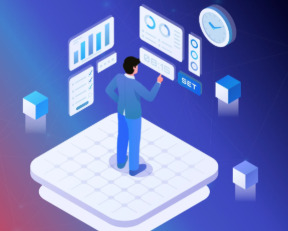
In today's data-driven business landscape, the ability to effectively manage and utilize vast amounts of information is crucial for maintaining a competitive edge. Data engineering services have emerged as essential solutions, enabling organizations to transform raw data into valuable insights that drive strategic decisions and operational efficiency. Agira Technologies, a leader in this field, offers comprehensive data engineering services designed to meet the unique needs of businesses across various industries.
Understanding Data Engineering Services
Data engineering involves the design, construction, and maintenance of systems that enable the collection, storage, and analysis of data. It encompasses various processes, including data ingestion, data transformation, data storage, and data integration, all aimed at ensuring that data is accessible, reliable, and ready for analysis. Effective data engineering lays the foundation for advanced analytics, artificial intelligence, and machine learning applications, empowering organizations to make data-driven decisions.
Key Components of Data Engineering
Data Ingestion: The process of collecting data from various sources, such as databases, APIs, and real-time streams, and bringing it into a centralized system for processing.
Data Transformation: Converting raw data into a usable format through cleaning, normalization, and enrichment to ensure consistency and quality.
Data Storage: Implementing scalable and secure storage solutions, such as data warehouses or data lakes, to accommodate large volumes of structured and unstructured data.
Data Integration: Combining data from different sources to provide a unified view, facilitating comprehensive analysis and reporting.
Data Orchestration: Coordinating and scheduling data workflows to ensure timely and efficient data processing.
The Importance of Data Engineering Services
Investing in data engineering services offers numerous benefits to organizations:
Enhanced Decision-Making: Access to high-quality, timely data enables informed decisions, leading to better business outcomes.
Operational Efficiency: Automated data processes reduce manual intervention, minimizing errors and freeing up resources for strategic tasks.
Scalability: Robust data architectures can handle growing data volumes, ensuring that systems remain responsive as the business expands.
Compliance and Security: Proper data management ensures adherence to regulatory requirements and protects sensitive information from breaches.
Agira Technologies' Data Engineering Services
Agira Technologies offers a comprehensive suite of data engineering services tailored to help businesses harness the power of their data:
Data Strategy and Consulting: Developing customized data strategies that align with business objectives and industry best practices.
Data Pipeline Development: Designing and implementing scalable ETL (Extract, Transform, Load) pipelines for efficient data processing.
Data Warehouse Modernization: Upgrading legacy data warehouses to modern platforms that support advanced analytics and real-time processing.
Big Data Solutions: Leveraging technologies like Hadoop and Spark to process and analyze large datasets, uncovering hidden patterns and insights.
Cloud Data Engineering: Utilizing cloud platforms to build flexible and cost-effective data infrastructures that can scale with business needs.
Data Quality Management: Implementing processes and tools to monitor and maintain data quality, ensuring accuracy and reliability.
Data Governance: Establishing policies and procedures to manage data assets responsibly, ensuring compliance and data integrity.
Case Studies: Agira Technologies in Action
Case Study 1: Retail Industry
Challenge: A leading retail company struggled with disparate data sources, leading to inconsistent reporting and delayed decision-making.
Solution: Agira Technologies developed a centralized data warehouse and implemented automated data pipelines, integrating data from various sources into a unified platform.
Outcome: The company achieved real-time reporting capabilities, improved data accuracy, and enhanced decision-making processes.
Case Study 2: Healthcare Sector
Challenge: A healthcare provider needed to process and analyze large volumes of patient data while ensuring compliance with regulatory standards.
Solution: Agira Technologies designed a secure data architecture with scalable storage solutions and implemented data governance frameworks to ensure compliance.
Outcome: The provider improved patient care through data-driven insights and maintained compliance with healthcare regulations.
Why Choose Agira Technologies?
Expertise: With years of experience in data engineering, Agira Technologies brings deep technical knowledge and industry insights to every project.
Customized Solutions: Understanding that each business is unique, Agira tailors its services to meet specific organizational needs and goals.
Quality Assurance: A commitment to excellence ensures that all solutions are thoroughly tested and optimized for performance and reliability.
Client-Centric Approach: Agira values collaboration and maintains transparent communication throughout the project lifecycle, ensuring client satisfaction.
Conclusion
In an era where data is a critical asset, effective data engineering services are indispensable for organizations aiming to thrive in a competitive market. Agira Technologies' comprehensive and customized data engineering solutions empower businesses to transform their data into actionable insights, driving innovation and growth. By partnering with Agira, organizations can build robust data infrastructures that support their strategic objectives and position them for long-term success.
0 notes
Text
Data Engineer vs Data Analyst vs Data Scientist vs ML Engineer: Choose Your Perfect Data Career!
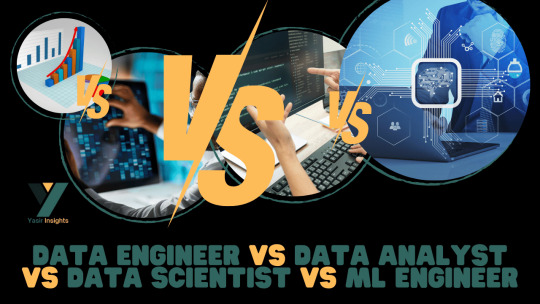
In today’s rapidly evolving tech world, career opportunities in data-related fields are expanding like never before. However, with multiple roles like Data Engineer vs Data Analyst vs Data Scientist vs ML Engineer, newcomers — and even seasoned professionals — often find it confusing to understand how these roles differ.
At Yasir Insights, we think that having clarity makes professional selections more intelligent. We’ll go over the particular duties, necessary abilities, and important differences between these well-liked Data Engineer vs Data Analyst vs Data Scientist vs ML Engineer data positions in this blog.
Also Read: Data Engineer vs Data Analyst vs Data Scientist vs ML Engineer
Introduction to Data Engineer vs Data Analyst vs Data Scientist vs ML Engineer
The Data Science and Machine Learning Development Lifecycle (MLDLC) includes stages like planning, data gathering, preprocessing, exploratory analysis, modelling, deployment, and optimisation. In order to effectively manage these intricate phases, the burden is distributed among specialised positions, each of which plays a vital part in the project’s success.
Data Engineer
Who is a Data Engineer?
The basis of the data ecosystem is built by data engineers. They concentrate on collecting, sanitising, and getting data ready for modelling or further analysis. Think of them as mining precious raw materials — in this case, data — from complex and diverse sources.
Key Responsibilities:
Collect and extract data from different sources (APIS, databases, web scraping).
Design and maintain scalable data pipelines.
Clean, transform, and store data in warehouses or lakes.
Optimise database performance and security.
Required Skills:
Strong knowledge of Data Structures and Algorithms.
Expertise in Database Management Systems (DBMS).
Familiarity with Big Data tools (like Hadoop, Spark).
Hands-on experience with cloud platforms (AWS, Azure, GCP).
Proficiency in building and managing ETL (Extract, Transform, Load) pipelines.
Data Analyst
Who is a Data Analyst?
Data analysts take over once the data has been cleansed and arranged. Their primary responsibility is to evaluate data in order to get valuable business insights. They provide answers to important concerns regarding the past and its causes.
Key Responsibilities:
Perform Exploratory Data Analysis (EDA).
Create visualisations and dashboards to represent insights.
Identify patterns, trends, and correlations in datasets.
Provide reports to support data-driven decision-making.
Required Skills:
Strong Statistical knowledge.
Proficiency in programming languages like Python or R.
Expertise in Data Visualisation tools (Tableau, Power BI, matplotlib).
Excellent communication skills to present findings clearly.
Experience working with SQL databases.
Data Scientist
Who is a Data Scientist?
Data Scientists build upon the work of Data Analysts by developing predictive models and machine learning algorithms. While analysts focus on the “what” and “why,” Data Scientists focus on the “what’s next.”
Key Responsibilities:
Design and implement Machine Learning models.
Perform hypothesis testing, A/B testing, and predictive analytics.
Derive strategic insights for product improvements and new innovations.
Communicate technical findings to stakeholders.
Required Skills:
Mastery of Statistics and Probability.
Strong programming skills (Python, R, SQL).
Deep understanding of Machine Learning algorithms.
Ability to handle large datasets using Big Data technologies.
Critical thinking and problem-solving abilities.
Machine Learning Engineer
Who is a Machine Learning Engineer?
Machine Learning Engineers (MLES) take the models developed by Data Scientists and make them production-ready. They ensure models are deployed, scalable, monitored, and maintained effectively in real-world systems.
Key Responsibilities:
Deploy machine learning models into production environments.
Optimise and scale ML models for performance and efficiency.
Continuously monitor and retrain models based on real-time data.
Collaborate with software engineers and data scientists for integration.
Required Skills:
Strong foundations in Linear Algebra, Calculus, and Probability.
Mastery of Machine Learning frameworks (TensorFlow, PyTorch, Scikit-learn).
Proficiency in programming languages (Python, Java, Scala).
Knowledge of Distributed Systems and Software Engineering principles.
Familiarity with MLOps tools for automation and monitoring.
Summary: Data Engineer vs Data Analyst vs Data Scientist vs ML Engineer
Data Engineer
Focus Area: Data Collection & Processing
Key Skills: DBMS, Big Data, Cloud Computing
Objective: Build and maintain data infrastructure
Data Analyst
Focus Area: Data Interpretation & Reporting
Key Skills: Statistics, Python/R, Visualisation Tools
Objective: Analyse data and extract insights
Data Scientist
Focus Area: Predictive Modelling
Key Skills: Machine Learning, Statistics, Data Analysis
Objective: Build predictive models and strategies
Machine Learning Engineer
Focus Area: Model Deployment & Optimisation
Key Skills: ML Frameworks, Software Engineering
Objective: Deploy and optimise ML models in production
Frequently Asked Questions (FAQS)
Q1: Can a Data Engineer become a Data Scientist?
Yes! With additional skills in machine learning, statistics, and model building, a Data Engineer can transition into a Data Scientist role.
Q2: Is coding necessary for Data Analysts?
While deep coding isn’t mandatory, familiarity with SQL, Python, or R greatly enhances a Data Analyst’s effectiveness.
Q3: What is the difference between a Data Scientist and an ML Engineer?
Data Scientists focus more on model development and experimentation, while ML Engineers focus on deploying and scaling those models.
Q4: Which role is the best for beginners?
If you love problem-solving and analysis, start as a Data Analyst. If you enjoy coding and systems, a Data Engineer might be your path.
Published By:
Mirza Yasir Abdullah Baig
Repost This Article and built Your Connection With Others
0 notes
Text
Optimizing Data Operations with Databricks Services
Introduction
In today’s data-driven world, businesses generate vast amounts of information that must be processed, analyzed, and stored efficiently. Managing such complex data environments requires advanced tools and expert guidance. Databricks Services offer comprehensive solutions to streamline data operations, enhance analytics, and drive AI-powered decision-making.
This article explores how Databricks Services accelerate data operations, their key benefits, and best practices for maximizing their potential.
What are Databricks Services?
Databricks Services encompass a suite of cloud-based solutions and consulting offerings that help organizations optimize their data processing, machine learning, and analytics workflows. These services include:
Data Engineering and ETL: Automating data ingestion, transformation, and storage.
Big Data Processing with Apache Spark: Optimizing large-scale distributed computing.
Machine Learning and AI Integration: Leveraging Databricks for predictive analytics.
Data Governance and Security: Implementing policies to ensure data integrity and compliance.
Cloud Migration and Optimization: Transitioning from legacy systems to modern Databricks environments on AWS, Azure, or Google Cloud.
How Databricks Services Enhance Data Operations
Organizations that leverage Databricks Services benefit from a unified platform designed for scalability, efficiency, and AI-driven insights.
1. Efficient Data Ingestion and Integration
Seamless data integration is essential for real-time analytics and business intelligence. Databricks Services help organizations:
Automate ETL pipelines using Databricks Auto Loader.
Integrate data from multiple sources, including cloud storage, on-premise databases, and streaming data.
Improve data reliability with Delta Lake, ensuring consistency and schema evolution.
2. Accelerating Data Processing and Performance
Handling massive data volumes efficiently requires optimized computing resources. Databricks Services enable businesses to:
Utilize Apache Spark clusters for distributed data processing.
Improve query speed with Photon Engine, designed for high-performance analytics.
Implement caching, indexing, and query optimization techniques for better efficiency.
3. Scaling AI and Machine Learning Capabilities
Databricks Services provide the infrastructure and expertise to develop, train, and deploy machine learning models. These services include:
MLflow for end-to-end model lifecycle management.
AutoML capabilities for automated model tuning and selection.
Deep learning frameworks like TensorFlow and PyTorch for advanced AI applications.
4. Enhancing Security and Compliance
Data security and regulatory compliance are critical concerns for enterprises. Databricks Services ensure:
Role-based access control (RBAC) with Unity Catalog for data governance.
Encryption and data masking to protect sensitive information.
Compliance with GDPR, HIPAA, CCPA, and other industry regulations.
5. Cloud Migration and Modernization
Transitioning from legacy databases to modern cloud platforms can be complex. Databricks Services assist organizations with:
Seamless migration from Hadoop, Oracle, and Teradata to Databricks.
Cloud-native architecture design tailored for AWS, Azure, and Google Cloud.
Performance tuning and cost optimization for cloud computing environments.
Key Benefits of Databricks Services
Organizations that invest in Databricks Services unlock several advantages, including:
1. Faster Time-to-Insight
Pre-built data engineering templates accelerate deployment.
Real-time analytics improve decision-making and operational efficiency.
2. Cost Efficiency and Resource Optimization
Serverless compute options minimize infrastructure costs.
Automated scaling optimizes resource utilization based on workload demand.
3. Scalability and Flexibility
Cloud-native architecture ensures businesses can scale operations effortlessly.
Multi-cloud and hybrid cloud support enable flexibility in deployment.
4. AI-Driven Business Intelligence
Advanced analytics and AI models uncover hidden patterns in data.
Predictive insights improve forecasting and business strategy.
5. Robust Security and Governance
Enforces best-in-class data governance frameworks.
Ensures compliance with industry-specific regulatory requirements.
Industry Use Cases for Databricks Services
Many industries leverage Databricks Services to drive innovation and operational efficiency. Below are some key applications:
1. Financial Services
Fraud detection using AI-powered transaction analysis.
Regulatory compliance automation for banking and fintech.
Real-time risk assessment for investment portfolios.
2. Healthcare & Life Sciences
Predictive analytics for patient care optimization.
Drug discovery acceleration through genomic research.
HIPAA-compliant data handling for secure medical records.
3. Retail & E-Commerce
Personalized customer recommendations using AI.
Supply chain optimization with predictive analytics.
Demand forecasting to improve inventory management.
4. Manufacturing & IoT
Anomaly detection in IoT sensor data for predictive maintenance.
AI-enhanced quality control systems to reduce defects.
Real-time analytics for production line efficiency.
Best Practices for Implementing Databricks Services
To maximize the value of Databricks Services, organizations should follow these best practices:
1. Define Clear Objectives
Set measurable KPIs to track data operation improvements.
Align data strategies with business goals and revenue targets.
2. Prioritize Data Governance and Quality
Implement data validation and cleansing processes.
Leverage Unity Catalog for centralized metadata management.
3. Automate for Efficiency
Use Databricks automation tools to streamline ETL and machine learning workflows.
Implement real-time data streaming for faster insights.
4. Strengthen Security Measures
Enforce multi-layered security policies for data access control.
Conduct regular audits and compliance assessments.
5. Invest in Continuous Optimization
Update data pipelines and ML models to maintain peak performance.
Provide ongoing training for data engineers and analysts.
Conclusion
Databricks Services provide businesses with the expertise, tools, and technology needed to accelerate data operations, enhance AI-driven insights, and improve overall efficiency. Whether an organization is modernizing its infrastructure, implementing real-time analytics, or strengthening data governance, Databricks Services offer tailored solutions to meet these challenges.
By partnering with Databricks experts, companies can unlock the full potential of big data, AI, and cloud-based analytics, ensuring they stay ahead in today’s competitive digital landscape.
0 notes
Text
IBM Db2 AI Updates: Smarter, Faster, Better Database Tools
IBM Db2
Designed to handle mission-critical workloads worldwide.
What is IBM Db2?
IBM Db2 is a cloud-native database designed to support AI applications at scale, real-time analytics, and low-latency transactions. It offers database managers, corporate architects, and developers a single engine that is based on decades of innovation in data security, governance, scalability, and availability.
- Advertisement -
When moving to hybrid deployments, create the next generation of mission-critical apps that are available 24/7 and have no downtime across all clouds.
Support for all contemporary data formats, workloads, and programming languages will streamline development.
Support for open formats, including Apache Iceberg, allows teams to safely communicate data and information, facilitating quicker decision-making.
Utilize IBM Watsonx integration for generative artificial intelligence (AI) and integrated machine learning (ML) capabilities to implement AI at scale.
Use cases
Power next-gen AI assistants
Provide scalable, safe, and accessible data so that developers may create AI-powered assistants and apps.
Build new cloud-native apps for your business
Create cloud-native applications with low latency transactions, flexible scalability, high concurrency, and security that work on any cloud. Amazon Relational Database Service (RDS) now offers it.
Modernize mission-critical web and mobile apps
Utilize Db2 like-for-like compatibility in the cloud to modernize your vital apps for hybrid cloud deployments. Currently accessible via Amazon RDS.
Power real-time operational analytics and insights
Run in-memory processing, in-database analytics, business intelligence, and dashboards in real-time while continuously ingesting data.
Data sharing
With support for Apache Iceberg open table format, governance, and lineage, you can share and access all AI data from a single point of entry.
In-database machine learning
With SQL, Python, and R, you can create, train, assess, and implement machine learning models from inside the database engine without ever transferring your data.
Built for all your workloads
IBM Db2 Database
Db2 is the database designed to handle transactions of any size or complexity. Currently accessible via Amazon RDS.
IBM Db2 Warehouse
You can safely and economically conduct mission-critical analytical workloads on all kinds of data with IBM Db2 Warehouse. Watsonx.data integration allows you to grow AI workloads anywhere.
IBM Db2 Big SQL
IBM Db2 Big SQL is a high-performance, massively parallel SQL engine with sophisticated multimodal and multicloud features that lets you query data across Hadoop and cloud data lakes.
Deployment options
You require an on-premises, hybrid, or cloud database. Use Db2 to create a centralized business data platform that operates anywhere.
Cloud-managed service
Install Db2 on Amazon Web Services (AWS) and IBM Cloud as a fully managed service with SLA support, including RDS. Benefit from the cloud’s consumption-based charging, on-demand scalability, and ongoing improvements.
Cloud-managed container
Launch Db2 as a cloud container:integrated Db2 into your cloud solution and managed Red Hat OpenShift or Kubernetes services on AWS and Microsoft Azure.
Self-managed infrastructure or IaaS
Take control of your Db2 deployment by installing it as a conventional configuration on top of cloud-based infrastructure-as-a-service or on-premises infrastructure.
IBM Db2 Updates With AI-Powered Database Helper
Enterprise data is developing at an astonishing rate, and companies are having to deal with ever-more complicated data environments. Their database systems are under more strain than ever as a result of this. Version 12.1 of IBM’s renowned Db2 database, which is scheduled for general availability this week, attempts to address these demands. The latest version redefines database administration by embracing AI capabilities and building on Db2’s lengthy heritage.
The difficulties encountered by database administrators who must maintain performance, security, and uptime while managing massive (and quickly expanding) data quantities are covered in Db2 12.1. A crucial component of their strategy is IBM Watsonx’s generative AI-driven Database Assistant, which offers real-time monitoring, intelligent troubleshooting, and immediate replies.
Introducing The AI-Powered Database Assistant
By fixing problems instantly and averting interruptions, the new Database Assistant is intended to minimize downtime. Even for complicated queries, DBAs may communicate with the system in normal language to get prompt responses without consulting manuals.
The Database Assistant serves as a virtual coach in addition to its troubleshooting skills, speeding up DBA onboarding by offering solutions customized for each Db2 instance. This lowers training expenses and time. By enabling DBAs to address problems promptly and proactively, the database assistant should free them up to concentrate on strategic initiatives that improve the productivity and competitiveness of the company.
IBM Db2 Community Edition
Now available
Db2 12.1
No costs. No adware or credit card. Simply download a single, fully functional Db2 Community License, which you are free to use for as long as you wish.
What you can do when you download Db2
Install on a desktop or laptop and use almost anywhere. Join an active user community to discover events, code samples, and education, and test prototypes in a real-world setting by deploying them in a data center.
Limits of the Community License
Community license restrictions include an 8 GB memory limit and a 4 core constraint.
Read more on govindhtech.com
#IBMDb2AIUpdates#BetterDatabaseTools#IBMDb2#ApacheIceberg#AmazonRelationalDatabaseService#RDS#machinelearning#IBMDb2Database#IBMDb2BigSQL#AmazonWebServices#AWS#MicrosoftAzure#IBMWatsonx#Db2instance#technology#technews#news#govindhtech
0 notes
Text
Innovative Data Engineering for Strategic Decision-Making

Data Engineering Services at Aakarshan Edge
In today’s data-driven landscape, Data Engineering services are pivotal for harnessing the full potential of enterprise data. The complexity and volume of data generated by modern businesses necessitate robust, scalable solutions to transform raw information into actionable insights. At aakarshansedge.com, our Data Engineering services focus on building high-performance data pipelines, architecting data lakes, and enabling seamless integration of disparate data sources, ensuring your business can make informed, real-time decisions backed by data science and analytics.
Key Components of Data Engineering
Data Pipeline Architecture A well-architected data pipeline is the foundation of a successful data engineering strategy. At Aakarshan Edge, we specialize in designing data pipelines that ensure the efficient flow of data from multiple sources into centralized storage solutions. Our pipelines are optimized for speed, reliability, and scalability, handling everything from real-time data streaming to batch processing. We ensure that data is cleansed, transformed, and enriched at each stage to maintain the highest level of accuracy and consistency.
Data Lakes and Warehouses Enterprises today require flexible and scalable storage solutions capable of handling structured, semi-structured, and unstructured data. Aakarshan Edge excels in creating both data lakes and data warehouses solution tailored to your business needs. We implement cloud-native and hybrid solutions that provide the necessary storage capacity and processing power to handle vast amounts of data while offering real-time access for analytics and machine learning applications.
ETL/ELT Process Optimization Extract, Transform, Load (ETL) and its variant, Extract, Load, Transform (ELT), are the backbones of data integration. We optimize ETL/ELT processes to reduce latency and improve efficiency, leveraging automation where possible. Our team uses advanced tools and frameworks to ensure that data transformation is seamless, whether it’s migrating data from legacy systems or integrating with third-party APIs. This results in reduced operational costs, increased performance, and enhanced decision-making capabilities.
Big Data Solutions As big data continues to grow, businesses must find ways to process vast datasets at lightning speed. Aakarshan Edge offers specialized big data solutions, utilizing platforms like Apache Hadoop, Apache Spark, and cloud-based systems such as AWS, Azure, and Google Cloud. Our big data expertise enables us to create scalable infrastructures capable of processing petabytes of data across distributed environments, making data analysis faster, more accurate, and more affordable.
Data Governance and Security Data governance and security are critical concerns in today’s regulatory environment. Aakarshan Edge implements comprehensive data governance frameworks that ensure compliance with international standards such as GDPR and CCPA. We deploy robust security measures, including encryption, access control, and data masking, ensuring that sensitive information is protected at every stage of the data lifecycle. Our proactive approach to data governance helps businesses maintain transparency, reduce risks, and build trust with their customers.
Cloud Data Engineering In the era of cloud computing, businesses increasingly turn to cloud-based data engineering solutions for their flexibility, scalability, and cost-effectiveness. At Aakarshan Edge, we develop cloud-native data architectures using leading platforms like AWS, Google Cloud, and Azure. Our cloud data engineering services include migrating on-premises data to the cloud, optimizing cloud resources for data processing, and building serverless solutions that scale effortlessly with your data needs.
Data Quality Management The value of data lies in its quality. Poor data quality can lead to faulty insights, resulting in bad business decisions. Aakarshan Edge employs sophisticated data quality management strategies to ensure that data is accurate, consistent, and reliable. From automated data validation to anomaly detection and real-time monitoring, we maintain high data integrity across the entire data lifecycle.
AI and Machine Learning Integration To maximize the value of your data, Aakarshan Edge integrates AI and machine learning capabilities into our data engineering solutions. This includes building models for predictive analytics, automating data-driven decision-making, and providing advanced data insights. By leveraging machine learning, businesses can uncover patterns and trends within their data that would otherwise remain hidden, enabling proactive strategies and innovation.
Benefits of Aakarshan Edge’s Data Engineering Services
Scalability and Flexibility: Our data engineering solutions are built to scale with your business, ensuring that as your data needs grow, our systems grow with them. We design modular architectures that allow for easy expansion, whether you’re processing gigabytes or petabytes of data. Cost Efficiency: Through optimization of data processing workflows and cloud resource utilization, we reduce costs while maintaining peak performance. Our solutions prioritize efficiency, allowing businesses to achieve more without overextending budgets. Real-time Insights: With Aakarshan Edge’s real-time data processing capabilities, businesses can react quickly to market changes, customer behavior, and operational inefficiencies. This agility helps companies stay competitive in fast-moving industries. Robust Security: Our security-first approach ensures that all data handled by our systems is protected from breaches, leaks, and unauthorized access. We embed security best practices into every layer of our data engineering services. Custom Solutions: Every business has unique data needs, and at Aakarshan Edge, we tailor our services to meet those specific requirements. From custom-built data lakes to proprietary machine learning models, our solutions are designed for optimal alignment with your business goals.
Conclusion Data is the cornerstone of modern business, and mastering it can unlock significant competitive advantages. Aakarshan Edge provides advanced data engineering services that are designed to meet the complex demands of today’s enterprises. Whether you need to streamline data operations, improve decision-making, or prepare for AI-driven innovations, we have the expertise to turn your data into a powerful business asset. Partner with us to drive your data strategy forward and stay ahead of the curve in an increasingly data-centric world. Contact us (+91-8860691214) (E-Mail: [email protected])
#Data Engineering Services#Data Engineering Solutions#Big Data Engineering#Data Pipeline Development
0 notes
Text
Data Lake Consulting Services for Scalable Data Management
Visit Site Now - https://goognu.com/services/data-warehouse-consulting-services
Harness the power of big data with our expert Data Lake Consulting Services. We help businesses design, implement, and optimize scalable data lake solutions to store, process, and analyze vast amounts of structured and unstructured data efficiently.
Our services include data lake architecture design, data ingestion, governance, security, and cloud integration. Whether you're building a data lake from scratch or optimizing an existing one, our consultants ensure seamless implementation tailored to your business needs.
We specialize in cloud-based data lakes on platforms like AWS (S3 & Lake Formation), Azure Data Lake, and Google Cloud Storage. Our team assists in real-time data streaming, batch processing, and integration with data warehouses to create a unified analytics ecosystem.
Security and compliance are at the heart of our approach. We implement role-based access control, encryption, and compliance frameworks to protect your data assets. Our data governance strategies ensure data integrity, accessibility, and regulatory compliance, including GDPR and HIPAA.
With a focus on cost optimization and performance, we help businesses reduce storage costs, improve query performance, and enable intelligent data lifecycle management. Our experts leverage serverless computing, ETL pipelines, and big data frameworks like Apache Spark and Hadoop to enhance efficiency.
For organizations looking to gain real-time insights, we integrate AI/ML capabilities, data analytics tools, and BI platforms to turn raw data into actionable intelligence. Our managed data lake services offer continuous monitoring, performance tuning, and support, ensuring long-term success.
Whether you're a startup or an enterprise, our Data Lake Consulting Services provide the expertise needed to transform raw data into a scalable, secure, and high-performing data ecosystem. Contact us today to accelerate your data-driven innovation!
0 notes
Text
Big Data Analytics: The Key to Unlocking Big Data Success

Big data analytics has become essential for businesses aiming to leverage vast amounts of data to drive decision-making and strategic initiatives.
By transforming raw data into valuable insights, big data analytics enables companies to optimise operations, improve customer experiences, and gain a competitive edge.
This blog explores the intricacies of data analytics, its tools, technologies, key components, future trends, and the numerous benefits it offers.
What is Big Data Analytics?

Big data analytics, incorporating customer support solutions, is the method of analysing extensive and diverse datasets—big data—to unveil concealed patterns, unknown correlations, market trends, customer preferences, and other valuable insights.
This process harnesses advanced analytical techniques and tools to scrutinise and interpret data that traditional processing software struggles to handle effectively.
How Big Data Analytics Works

Big data analytics works through several steps:
1. Data Collection
Gathering data from various sources such as social media, sensors, transactions, and more.
2. Data Storage
Storing the collected data in databases or data lakes.
3. Data Processing
Cleaning and transforming the data to make it suitable for analysis.
4. Data Analysis
Applying analytical techniques such as machine learning, statistical analysis, and predictive modelling.
5. Data Visualisation
Presenting the results in an understandable format using dashboards and visualisation tools.
Big Data Analytics Tools and Technology
Several tools and technologies are integral to big data analytics. These include:
1. Hadoop
An open-source framework that allows for the distributed processing of large data sets across clusters of computers.
2. Spark
A data processing engine that works well with Hadoop and is known for its speed and ease of use.
3. NoSQL Databases
Tools like MongoDB and Cassandra, renowned for managing large volumes of unstructured data, offer invaluable IT services project management. They streamline data handling processes, ensuring efficient project execution.
4. Data Lakes
Storage repositories that hold vast amounts of raw data in its native format until it is needed.
5. Data Visualisation Tools
Tools like Tableau and Power BI that help in creating interactive and shareable dashboards.
Key Components of Big Data Analytics

The key components that constitute a robust big data analytics framework include:
1. Data Management
Effective collection, storage, and retrieval of data.
2. Data Mining
Extracting useful information from large datasets.
3. Predictive Analytics
Using statistical models to predict future outcomes based on historical data.
4. Machine Learning
Algorithms that improve automatically through experience and data.
5. Data Visualisation
Presenting data in graphical formats to easily understand trends and patterns.
6. Scalability
The ability to handle increasing amounts of data seamlessly.
Future Trends in Big Data Analytics

Big data analytics continues to evolve, with several trends shaping its future:
1. Artificial Intelligence and Machine Learning Integration
More sophisticated AI and machine learning algorithms are being integrated to enhance predictive analytics, especially in the realm of business intelligence consulting services. These advancements make it easier to predict future trends and make informed decisions.
2. Real-Time Analytics
The demand for real-time data processing and analysis is growing, enabling businesses to make faster decisions.
3. Edge Computing
Processing data closer to where it is generated to reduce latency and improve efficiency.
4. Data Privacy and Security
As data volumes grow, so does the need for robust data governance frameworks to ensure privacy and compliance.
5. Augmented Analytics
Leveraging AI to automate data preparation, insight discovery, and sharing.
The Benefits of Using Big Data Analytics

Implementing big data analytics offers numerous benefits:
1. Improved Decision Making
Data-driven insights lead to better business decisions along with better business integration.
2. Enhanced Customer Experiences
Understanding customer preferences and behaviour helps in personalising services and products.
3. Operational Efficiency
Streamlining operations and reducing costs through optimised processes.
4. Competitive Advantage
Gaining insights that competitors may not have access to.
5. Revenue Growth
Identifying new market opportunities and revenue streams.
6. Risk Management
Predicting and mitigating potential risks more effectively.
Conclusion
Big data analytics isn’t just a passing tech fad; it’s a crucial business tool that revolutionises how organisations operate and stay competitive. When paired with top-notch software consulting services, it becomes even more powerful.
By leveraging advanced tools and technologies, businesses can uncover valuable insights, drive innovation, and achieve significant growth for business growth consultant and framework data governance as well.
As the field continues to evolve with new trends and advancements, the potential for analytics to deliver strategic advantages will only increase. Investing in is no longer optional but a necessity for businesses striving for success in the digital age.
Source: Big Data Analytics
0 notes
Text
Understanding Data Engineering Services
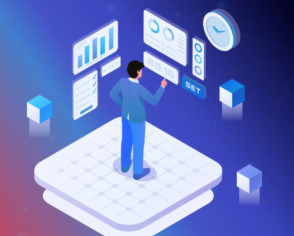
In today's data-driven business landscape, the ability to effectively manage and utilize vast amounts of information is crucial for maintaining a competitive edge. Data engineering services have emerged as essential solutions, enabling organizations to transform raw data into valuable insights that drive strategic decisions and operational efficiency. Agira Technologies, a leader in this field, offers comprehensive data engineering services designed to meet the unique needs of businesses across various industries.
Understanding Data Engineering Services
Data engineering involves the design, construction, and maintenance of systems that enable the collection, storage, and analysis of data. It encompasses various processes, including data ingestion, data transformation, data storage, and data integration, all aimed at ensuring that data is accessible, reliable, and ready for analysis. Effective data engineering lays the foundation for advanced analytics, artificial intelligence, and machine learning applications, empowering organizations to make data-driven decisions.
Key Components of Data Engineering
Data Ingestion: The process of collecting data from various sources, such as databases, APIs, and real-time streams, and bringing it into a centralized system for processing.
Data Transformation: Converting raw data into a usable format through cleaning, normalization, and enrichment to ensure consistency and quality.
Data Storage: Implementing scalable and secure storage solutions, such as data warehouses or data lakes, to accommodate large volumes of structured and unstructured data.
Data Integration: Combining data from different sources to provide a unified view, facilitating comprehensive analysis and reporting.
Data Orchestration: Coordinating and scheduling data workflows to ensure timely and efficient data processing.
The Importance of Data Engineering Services
Investing in data engineering services offers numerous benefits to organizations:
Enhanced Decision-Making: Access to high-quality, timely data enables informed decisions, leading to better business outcomes.
Operational Efficiency: Automated data processes reduce manual intervention, minimizing errors and freeing up resources for strategic tasks.
Scalability: Robust data architectures can handle growing data volumes, ensuring that systems remain responsive as the business expands.
Compliance and Security: Proper data management ensures adherence to regulatory requirements and protects sensitive information from breaches.
Agira Technologies' Data Engineering Services
Agira Technologies offers a comprehensive suite of data engineering services tailored to help businesses harness the power of their data:
Data Strategy and Consulting: Developing customized data strategies that align with business objectives and industry best practices.
Data Pipeline Development: Designing and implementing scalable ETL (Extract, Transform, Load) pipelines for efficient data processing.
Data Warehouse Modernization: Upgrading legacy data warehouses to modern platforms that support advanced analytics and real-time processing.
Big Data Solutions: Leveraging technologies like Hadoop and Spark to process and analyze large datasets, uncovering hidden patterns and insights.
Cloud Data Engineering: Utilizing cloud platforms to build flexible and cost-effective data infrastructures that can scale with business needs.
Data Quality Management: Implementing processes and tools to monitor and maintain data quality, ensuring accuracy and reliability.
Data Governance: Establishing policies and procedures to manage data assets responsibly, ensuring compliance and data integrity.
Case Studies: Agira Technologies in Action
Case Study 1: Retail Industry
Challenge: A leading retail company struggled with disparate data sources, leading to inconsistent reporting and delayed decision-making.
Solution: Agira Technologies developed a centralized data warehouse and implemented automated data pipelines, integrating data from various sources into a unified platform.
Outcome: The company achieved real-time reporting capabilities, improved data accuracy, and enhanced decision-making processes.
Case Study 2: Healthcare Sector
Challenge: A healthcare provider needed to process and analyze large volumes of patient data while ensuring compliance with regulatory standards.
Solution: Agira Technologies designed a secure data architecture with scalable storage solutions and implemented data governance frameworks to ensure compliance.
Outcome: The provider improved patient care through data-driven insights and maintained compliance with healthcare regulations.
Why Choose Agira Technologies?
Expertise: With years of experience in data engineering, Agira Technologies brings deep technical knowledge and industry insights to every project.
Customized Solutions: Understanding that each business is unique, Agira tailors its services to meet specific organizational needs and goals.
Quality Assurance: A commitment to excellence ensures that all solutions are thoroughly tested and optimized for performance and reliability.
Client-Centric Approach: Agira values collaboration and maintains transparent communication throughout the project lifecycle, ensuring client satisfaction.
Conclusion
In an era where data is a critical asset, effective data engineering services are indispensable for organizations aiming to thrive in a competitive market. Agira Technologies' comprehensive and customized data engineering solutions empower businesses to transform their data into actionable insights, driving innovation and growth. By partnering with Agira, organizations can build robust data infrastructures that support their strategic objectives and position them for long-term success.
0 notes
Text
An Overview of Data Lakes
In the ever-expanding realm of data science, where information reigns supreme, the concept of data lakes has emerged as a pivotal component in the storage and analysis of vast amounts of data. As organizations increasingly recognize the value of data-driven decision-making, the need for robust data management solutions becomes paramount. In this blog post, we delve into the intricacies of data lakes, exploring their significance, architecture, and advantages in the realm of data science.
Understanding Data Lakes
At its core, a data lake is a centralized repository that allows for the storage of structured, semi-structured, and unstructured data at scale. Unlike traditional data warehouses, which require data to be processed and structured before storage, data lakes offer a more flexible approach, enabling organizations to store raw data in its native format. This characteristic makes data lakes particularly well-suited for the storage of diverse data types, ranging from text and images to sensor data and social media feeds.
Architecture of Data Lakes
A typical data lake architecture comprises three layers: the storage layer, the processing layer, and the analytics layer. At the storage layer, data is ingested from various sources and stored in its raw form. This layer often utilizes scalable storage solutions such as Hadoop Distributed File System (HDFS) or cloud-based storage services like Amazon S3 and Azure Data Lake Storage. The processing layer facilitates data transformation and analysis, utilizing technologies such as Apache Spark and Apache Flink. Finally, the analytics layer enables data scientists and analysts to derive insights from the stored data using tools like Apache Hadoop and Apache Hive.
Advantages of Data Lakes
Data lakes offer several advantages over traditional data storage solutions. Firstly, they provide a cost-effective means of storing large volumes of data, as they eliminate the need for costly data transformation processes upfront. Additionally, data lakes promote data democratization within organizations, allowing stakeholders across departments to access and analyze data without constraints. Moreover, data lakes facilitate advanced analytics and machine learning initiatives by providing a unified repository for data exploration and experimentation.
Challenges and Considerations
While data lakes offer compelling benefits, they also present challenges that organizations must address. One such challenge is data governance, as the lack of upfront structure in data lakes can lead to issues related to data quality, privacy, and security. Furthermore, managing data sprawl and ensuring proper metadata management are critical considerations in maintaining the integrity and usability of data lakes. Organizations must also invest in skilled personnel and robust data management practices to derive maximum value from their data lake initiatives.
Best Practices for Implementing Data Lakes
To successfully implement a data lake, organizations should adhere to several best practices. Firstly, they should define clear objectives and use cases for their data lake initiative, ensuring alignment with business goals. Additionally, organizations should adopt a modular approach to data lake design, allowing for scalability and flexibility as data volumes and analytics requirements evolve. Moreover, investing in data governance frameworks and establishing data stewardship roles can help mitigate risks associated with data quality and compliance.
Future Outlook and Conclusion
As the demand for data-driven insights continues to rise, data lakes are poised to play an increasingly crucial role in enabling organizations to harness the full potential of their data assets. By providing a scalable, flexible, and cost-effective solution for storing and analyzing diverse data types, data lakes empower organizations to derive actionable insights and drive innovation in the ever-evolving landscape of data science. As such, investing in data science online training and certification programs, offered by leading data science institutes, becomes imperative for professionals seeking to leverage the power of data lakes in their careers.
In conclusion, data lakes represent a paradigm shift in data management, offering organizations a powerful tool for unlocking the value of their data. By embracing best practices and addressing challenges proactively, organizations can harness the transformative potential of data lakes to drive business growth and competitive advantage in today's data-driven world.
0 notes
Text
Unlocking the Power of Data Lake Implementation Services

Understanding Data Lakes
Before delving into Data Lake Implementation Services, it’s essential to understand what a Data Lake is. A Data Lake is a centralized repository that allows organizations to store vast amounts of structured and unstructured data in its raw format. Unlike traditional data storage systems, Data Lakes can store data of any type and size, making them highly flexible and scalable.
The Importance of Data Lake Implementation Services
Data Lake Implementation Services encompass a range of activities aimed at designing, building, and managing Data Lakes tailored to the specific needs of organizations. These services offer several benefits, including:
1. Scalability: Data Lake Implementation Services enable organizations to build scalable Data Lakes capable of handling large volumes of data. This scalability ensures that organizations can accommodate growing data needs without compromising performance.
2. Flexibility: With Data Lake Implementation Services, organizations can design Data Lakes that support various data types, including structured, semi-structured, and unstructured data. This flexibility allows organizations to store and analyze diverse data sources efficiently.
3. Data Integration: Data Lake Implementation Services facilitate the integration of data from multiple sources into a single, centralized repository. This integration ensures that organizations have a comprehensive view of their data, enabling better decision-making and analysis.
4. Data Governance: Effective Data Lake Implementation Services incorporate robust data governance frameworks to ensure data quality, security, and compliance. This ensures that organizations can trust the integrity of their data and adhere to regulatory requirements.
5. Advanced Analytics: Data Lake Implementation Services empower organizations to leverage advanced analytics and machine learning capabilities to derive valuable insights from their data. By combining Data Lakes with analytics tools, organizations can uncover hidden patterns, trends, and correlations that drive business growth.
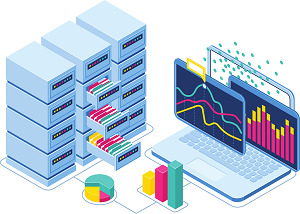
1. Data Architecture Design: This involves designing the overall architecture of the Data Lake, including data ingestion, storage, processing, and access layers.
2. Data Ingestion: Data Lake Implementation Services include mechanisms for ingesting data from various sources, such as databases, streaming platforms, IoT devices, and external data feeds.
3. Data Storage: Data Lake Implementation Services define the storage mechanisms for storing raw and processed data within the Data Lake, such as distributed file systems or cloud storage solutions.
4. Data Processing: Data Lake Implementation Services encompass data processing capabilities for transforming, cleansing, and enriching data within the Data Lake using technologies like Apache Spark or Hadoop.
5. Data Governance and Security: Data Lake Implementation Services include features for implementing data governance policies, access controls, encryption, and compliance measures to ensure data security and regulatory compliance.
Conclusion
Data Lake Implementation Data Engineering Services play a crucial role in helping organizations harness the power of their data effectively. By providing scalable, flexible, and integrated Data Lakes, these services enable organizations to derive actionable insights, drive innovation, and gain a competitive edge in today’s data-driven landscape. As organizations continue to prioritize data-driven decision-making, the demand for Data Lake Implementation Services is expected to grow, making them indispensable for organizations looking to unlock the full potential of their data.
0 notes
Text
Unraveling the World of Data: The Transformative Power of a BSc in Data Science
A Bachelor of Science (BSc) in Data Science is a cutting-edge undergraduate program that equips students with the knowledge, skills, and expertise needed to harness the power of data to drive insights, innovation, and decision-making in today's digital age. This interdisciplinary field combines elements of computer science, statistics, mathematics, and domain expertise to analyze large volumes of data and extract meaningful insights that can inform strategic business decisions, scientific discoveries, and societal advancements.
Curriculum Overview:
The curriculum of a BSc Data Science typically covers a wide range of subjects, including:
Foundations of Data Science: Students learn about fundamental concepts in data science, including data structures, algorithms, programming languages, and database management systems. They gain proficiency in collecting, cleaning, and organizing data for analysis.
Statistics and Probability: This area focuses on statistical methods, probability theory, and data modeling techniques. Students learn how to analyze data distributions, perform hypothesis testing, and draw meaningful conclusions from data sets using statistical software tools.
Machine Learning and Artificial Intelligence: Students study advanced machine learning algorithms, deep learning techniques, and neural networks. They learn how to build predictive models, classify data, and solve complex problems using machine learning frameworks and libraries.
Big Data Technologies: With the rise of big data, students learn about distributed computing frameworks such as Hadoop and Spark, as well as data storage and processing technologies like NoSQL databases and data lakes. They acquire skills in handling and processing massive datasets efficiently and effectively.
Data Visualization and Communication: Students study techniques for visualizing data and communicating insights effectively to diverse audiences. They learn how to create compelling visualizations, dashboards, and reports that convey complex information in a clear and concise manner.
Career Opportunities:
Graduates of a BSc in Data Science are well-positioned to pursue a wide range of career opportunities in industries such as:
Data Science and Analytics: Graduates can work as data scientists, data analysts, or machine learning engineers, helping organizations extract insights from data to drive strategic decision-making and innovation.
Business Intelligence and Data Warehousing: Graduates can work in roles such as business intelligence analysts or data warehouse developers, designing and maintaining data warehouses, and creating reports and dashboards to support business operations.
Big Data Engineering: With their expertise in big data technologies, graduates can pursue careers as big data engineers or data architects, designing and implementing scalable data infrastructure and analytics platforms.
AI Research and Development: Graduates can work in research and development roles, designing and implementing AI-powered solutions for diverse applications such as natural language processing, computer vision, and autonomous systems.
Conclusion:A Bachelor of Science (BSc) in Data Science offers students a unique opportunity to gain specialized expertise in one of the most sought-after fields in today's digital economy. With its rigorous curriculum, hands-on projects, and focus on cutting-edge technologies, this program prepares graduates to tackle complex data challenges and make a meaningful impact in their chosen careers. Whether it's analyzing big data, building predictive models, or developing AI-powered applications, the skills acquired through a BSc Data Science empower graduates to thrive in a wide range of industries and drive innovation in the era of big data.
0 notes
Text
Data Engineering Course in Hyderabad | AWS Data Engineer Training
Overview of AWS Data Modeling
Data modeling in AWS involves designing the structure of your data to effectively store, manage, and analyse it within the Amazon Web Services (AWS) ecosystem. AWS provides various services and tools that can be used for data modeling, depending on your specific requirements and use cases. Here's an overview of key components and considerations in AWS data modeling
AWS Data Engineer Training
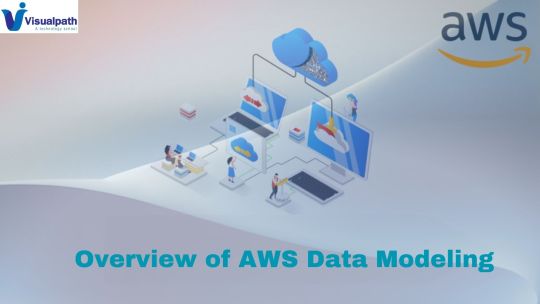
Understanding Data Requirements: Begin by understanding your data requirements, including the types of data you need to store, the volume of data, the frequency of data updates, and the anticipated usage patterns.
Selecting the Right Data Storage Service: AWS offers a range of data storage services suitable for different data modeling needs, including:
Amazon S3 (Simple Storage Service): A scalable object storage service ideal for storing large volumes of unstructured data such as documents, images, and logs.
Amazon RDS (Relational Database Service): Managed relational databases supporting popular database engines like MySQL, PostgreSQL, Oracle, and SQL Server.
Amazon Redshift: A fully managed data warehousing service optimized for online analytical processing (OLAP) workloads.
Amazon DynamoDB: A fully managed NoSQL database service providing fast and predictable performance with seamless scalability.
Amazon Aurora: A high-performance relational database compatible with MySQL and PostgreSQL, offering features like high availability and automatic scaling. - AWS Data Engineering Training
Schema Design: Depending on the selected data storage service, design the schema to organize and represent your data efficiently. This involves defining tables, indexes, keys, and relationships for relational databases or determining the structure of documents for NoSQL databases.
Data Ingestion and ETL: Plan how data will be ingested into your AWS environment and perform any necessary Extract, Transform, Load (ETL) operations to prepare the data for analysis. AWS provides services like AWS Glue for ETL tasks and AWS Data Pipeline for orchestrating data workflows.
Data Access Control and Security: Implement appropriate access controls and security measures to protect your data. Utilize AWS Identity and Access Management (IAM) for fine-grained access control and encryption mechanisms provided by AWS Key Management Service (KMS) to secure sensitive data.
Data Processing and Analysis: Leverage AWS services for data processing and analysis tasks, such as - AWS Data Engineering Training in Hyderabad
Amazon EMR (Elastic MapReduce): Managed Hadoop framework for processing large-scale data sets using distributed computing.
Amazon Athena: Serverless query service for analysing data stored in Amazon S3 using standard SQL.
Amazon Redshift Spectrum: Extend Amazon Redshift queries to analyse data stored in Amazon S3 data lakes without loading it into Redshift.
Monitoring and Optimization: Continuously monitor the performance of your data modeling infrastructure and optimize as needed. Utilize AWS CloudWatch for monitoring and AWS Trusted Advisor for recommendations on cost optimization, performance, and security best practices.
Scalability and Flexibility: Design your data modeling architecture to be scalable and flexible to accommodate future growth and changing requirements. Utilize AWS services like Auto Scaling to automatically adjust resources based on demand. - Data Engineering Course in Hyderabad
Compliance and Governance: Ensure compliance with regulatory requirements and industry standards by implementing appropriate governance policies and using AWS services like AWS Config and AWS Organizations for policy enforcement and auditing.
By following these principles and leveraging AWS services effectively, you can create robust data models that enable efficient storage, processing, and analysis of your data in the cloud.
Visualpath is the Leading and Best Institute for AWS Data Engineering Online Training, in Hyderabad. We at AWS Data Engineering Training provide you with the best course at an affordable cost.
Attend Free Demo
Call on - +91-9989971070.
Visit: https://www.visualpath.in/aws-data-engineering-with-data-analytics-training.html
#AWS Data Engineering Online Training#AWS Data Engineering Training#Data Engineering Training in Hyderabad#AWS Data Engineering Training in Hyderabad#Data Engineering Course in Ameerpet#AWS Data Engineering Training Ameerpet#Data Engineering Course in Hyderabad#AWS Data Engineering Training Institute
0 notes